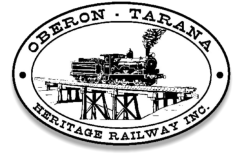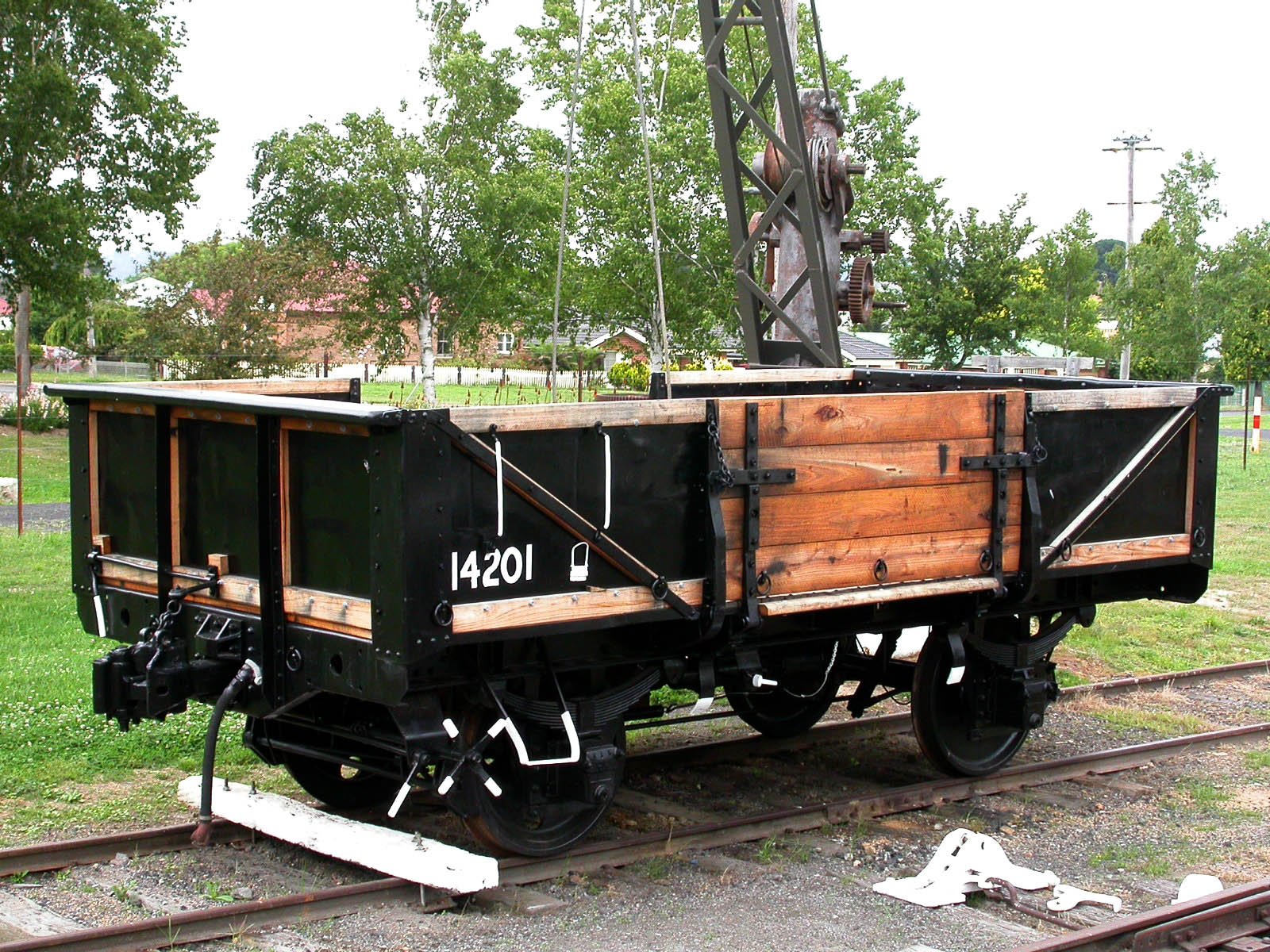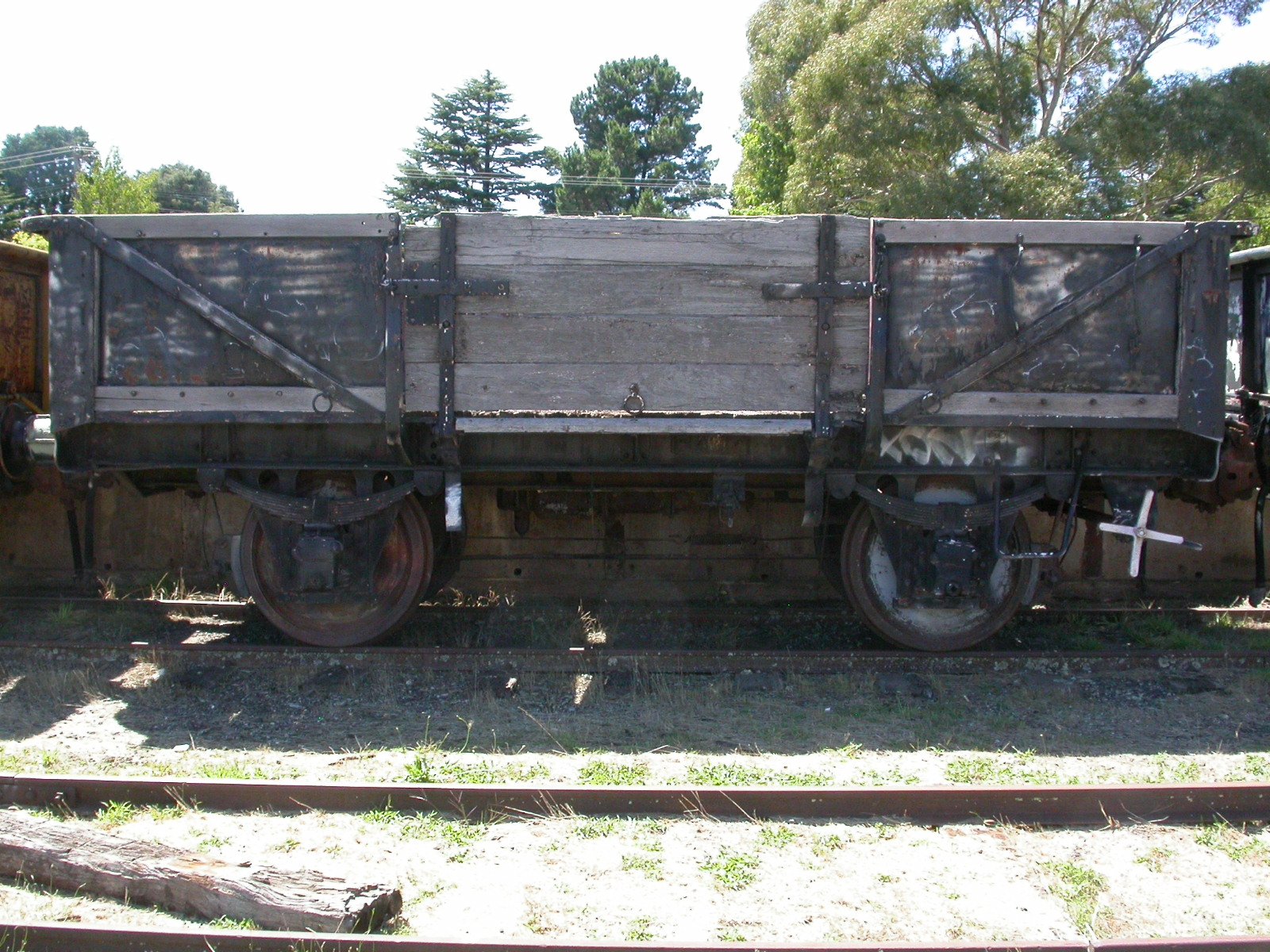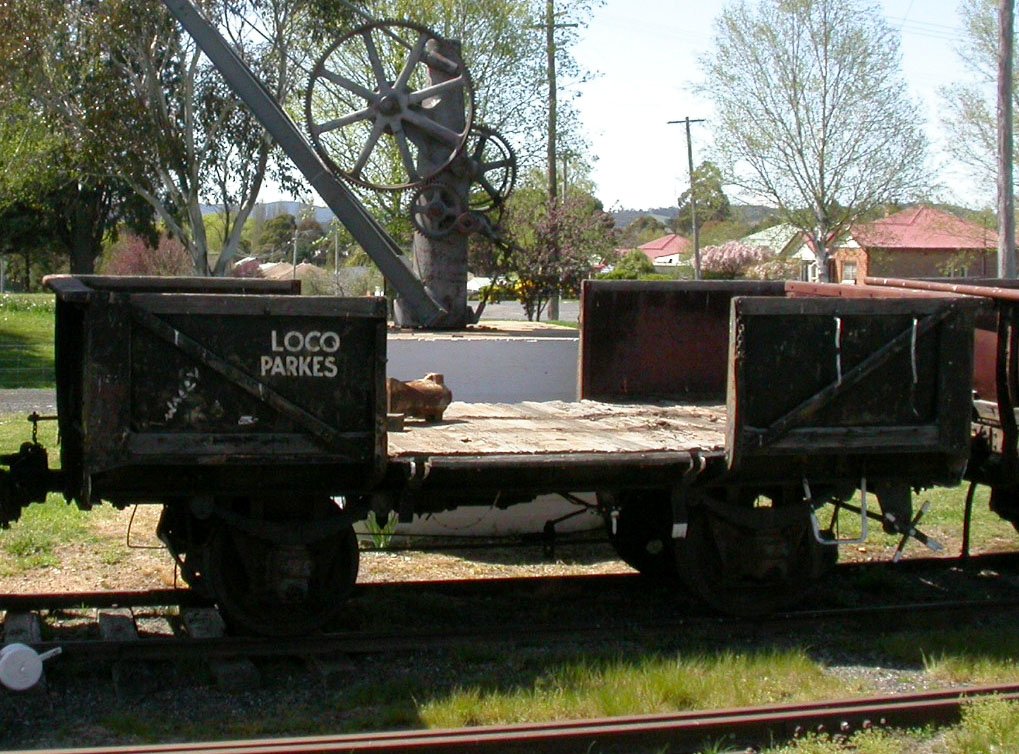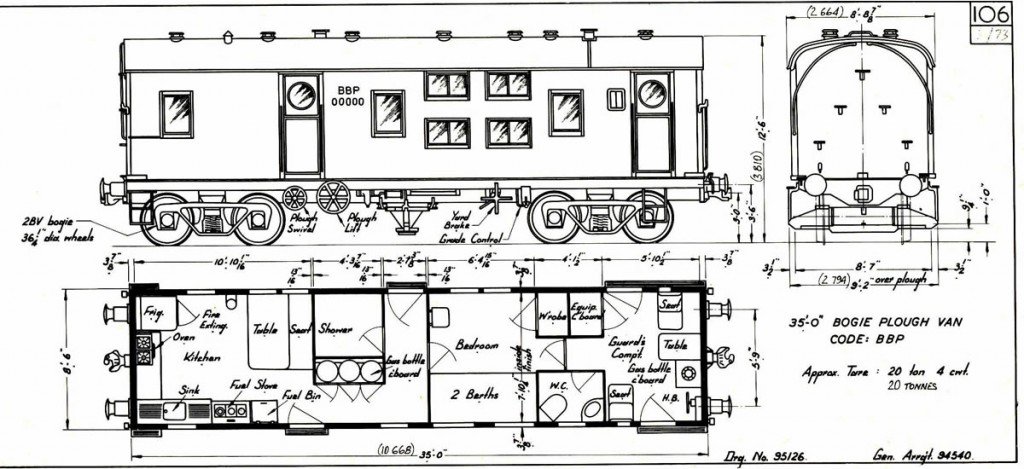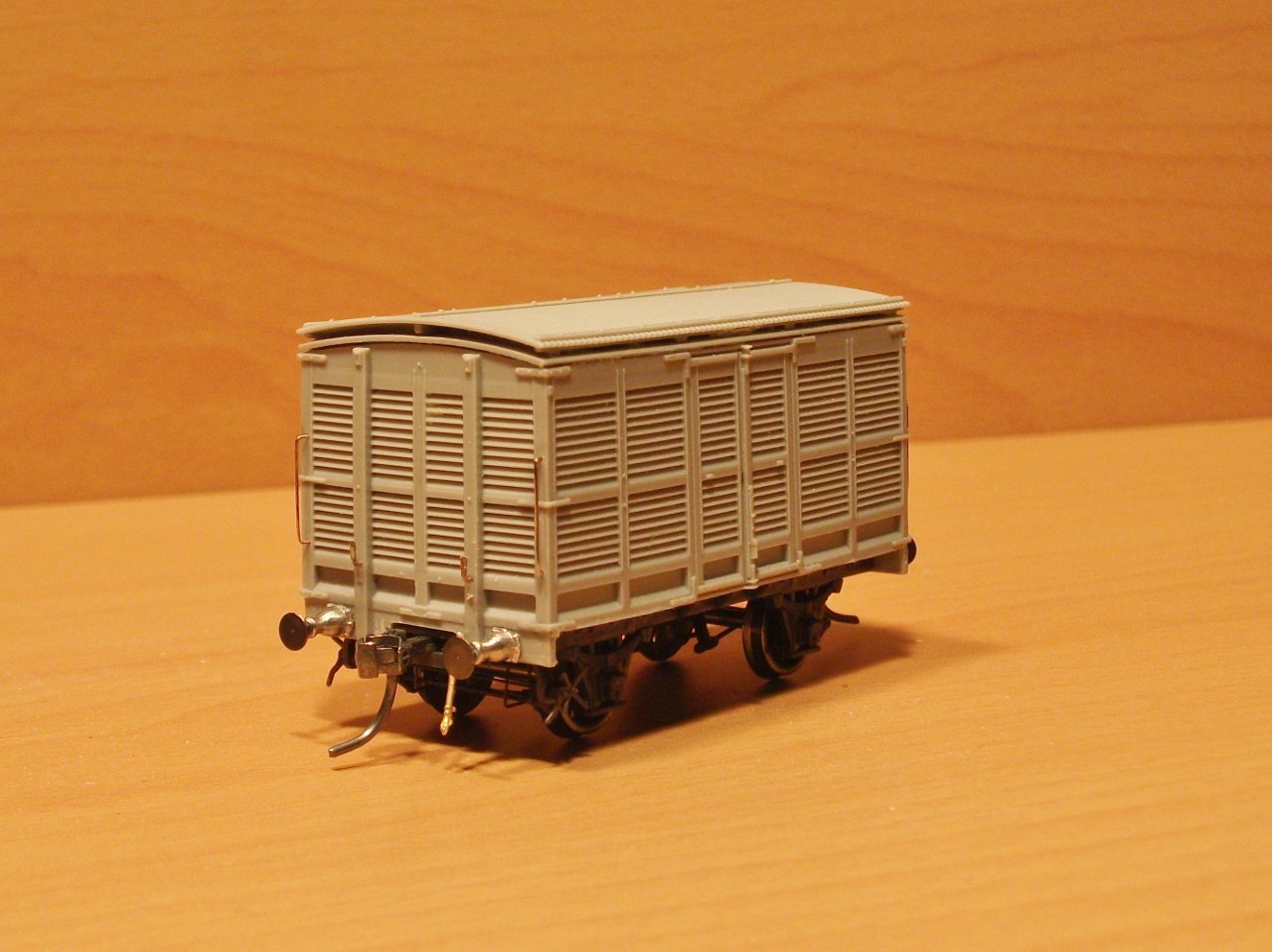Wagons
OTHR is assembling a rake of goods wagons similar to those utilised on the line in the past in it’s heyday. These will be used for display and interpretive purposes within the Oberon Railway Yard.
History of S-Trucks
S class vehicles are 4-sheel open freight wagons which were used to carry general freight on the NSW rail system. They were built between 1907 and 1958, with a tar weight of 8T and a capacilty of 16T
More than 10,000 of these 4-wheel open wagons were built, forming the backbone of the NSW freight service for some 70 years, and were loaded with almost any freight except livestock.
A full load could be 51 bales of wool, or 188 bags of grain. Only about 30 of these trick remain in existence today. These wagons are known colloquially as “S Trucks”.
Information courtesy ARHS-ACT Div.
Restoration of S Truck 14201
This S Truck was restored by 5 enthusiastic volunteers from Conservation Volunteers Australia, under the supervision of our Track Manager, Peter Culley.
An idea of the previous condition of this heritage vehicle can be seen in the photo below.
S Truck S12815
This S truck was built by Ritchie Brothers in October 1907. It was built as an all steel wagon, steel floor, sides and drop doors with angle iron corner pieces and fitted with buffers and screw couplings.
It received automatic couplings in August 1940 and went on to receive a new underframe in the railway goods wagon workshops at Clyde in August 1956.
It remained in service until it was finally condemned and written off in May 1983.
S Truck W1052
This S truck was built by Clyde Engineering in June 1914 as S 368.
It was built with an I beam underframe, wooden floor and sides, steel drop doors with angle iron corner pieces and fitted with buffers and screw couplings.
It received automatic couplings in July 1936 and went on to receive a new underframe in the railway goods wagon workshops at Clyde in September 1948.
S 368 was withdrawn from goods service and transferred to the Service Stock register as W 1052 in October 1962.
It remained in NSW railways service until it was finally condemned and written off in October 1966.
S Truck L987
This S truck is our mystery wagon, as no records of this wagon have yet been found by the experts in the NSW Government Railway Archives.
S truck “loco Parkes”
Further research is required to uncover the history of this S truck
Bogie Ballast Plough Van
This Bogie Ballast Plough Van (BBP) is numbered W1049 and is one of 16 built (Nos 1035 to 1050) for the NSW railways – the last being delivered in 1970.
These vans had a guard’s compartment at one end with a door on either side. The rest of the wagon consisted of living quarters for the ballasting crew. These quarters consisted of a kitchen area with oven, fuel stove and sink; a living area with table, fixed seats, two berths and a wardrobe; and an ablutions area with shower and WC.
Many of these wagons were condemned in the mid 1980s; wagons 1044 and 1049 apparently survived into the 1990s with the superstructure intact.
Builders: Unknown
Running numbers are 1035 – 1050
- Length: 10.67m over headstocks
- Tare: 20 t
- Width: 2.79 m over plough
- Height: 3.81 m
- Bogies: 2BN, 2BV, AVA, AVB
Coding: Introduced as BBPs, some may have been recoded FBP when they obtained roller bearing bogies. They were recoded NZBF in the ROA renumbering of 1980.
Colour Scheme: The covered wagons were generally in Ways and Works cream.
After conversion the stripped wagons had several colour schemes. Some were in dark blue (eg 1041, 1047), at least one (1036) was yellow and others appear not to have been repainted.
History
The last of 16 BBP bogie ballast ploughs was delivered in 1970. There appear to have been two different body styles on the same underframe. Both types had a guard’s compartment, taking up about 20% of the wagon, at one end with a door on either side. The rest of the wagon consisted of living quarters for the ballasting crew. These quarters consisted of a kitchen area with oven, fuel stove and sink; a living area with table, fixed seats, two berths and a wardrobe; and an ablutions area with shower and WC. One type of wagon had only a single door into the crew facilities and large guards duckets, the other had a door each side and small duckets.
More information is required on these vans and their numbers. Many of these wagons were condemned in the mid 1980s; some were returned to service after removal of the superstructure. The stripped wagons appear to have all been different and the conversions may have been done in several depots/maintenance centres. Different devices were employed to increase the weight of the stripped wagons including steel beams and concrete blocks.
Further Modifications
The covered forms of the wagon underwent numerous small changes, generally only applied to one or a few wagons so that they slowly became more and more dissimilar in detail. The major modification came in the removal of the superstructure of some wagons in the mid 80s. Some of the converted wagons are still in operation. Wagons known to have been converted include NZBF 1036, W 1037, NZBF 1041, W 1043, and NZBF 1047. Some, including 1036, 1041 and 1047, had decks; others were skeletal. Wagons 1044 and 1049 apparently survived into the 1990s with the superstructure intact.
Operation
The BBPs operated at the end of a rake of ballast hoppers, either at one end only or at both ends, depending on the job to be done and whether the section had to be cleared during ballasting for other traffic. The covered vans could be seen with the NHWF (BBW/FBW type) and NHBF wagons. The stripped version could be seen with the welded NHWF, NHBF and NDFF wagons.
Refrigerated Van
These ‘ice-chilled’ steel-bodied were built to replace the ageing fleet of timber bodied refrigerated vans then in service. They are a very plain looking van with a mansard shaped roof. There are 8 hatches on the roof for the loading of ice. 2 tons of ice was hand loaded for cooling purposes. Later these vans were modified for use as general vans without refrigeration.
Builders: 30 vans were built by Goninan in 1973-74 and were numbered 22701 – 22730.
- Length: 11.58m
- Tare: 29t
Bogies: 2CM (YMC) originally, then any bogie exchange type after they were converted to general box vans.
Coding:
- As introduced, they were coded NRY
- They were recoded NRNY in 1980.
- Most were converted to general use box vans and were recoded NBTX/NBTY.
Colour Scheme:
The vans have only ever appeared in one colour scheme. Body and roof is painted white, underframe and bogies are black.
Further Modifications:
As part of their conversion to general box vans, the ice hatches were sealed and bogies were changed.
Operation:
The vans were used for the transport of perishable meat and fruit traffic from all areas of the state. When introduced they started to replace the timber-bodied MRC type vans. They were seen used together with TRC and other louvred vans on the faster perishable and fruit express trains. When this form of traffic was lost to road transport, the vans were converted for use in general box van duties. They were all withdrawn in the mid to late 90’s. As late as 1997, 11 wagons were on the books as the NBTY.
Bogie Flat Wagon
Arnotts Biscuit Van
History
The ABV ‘Arnott’s Biscuit Van’, and its legendary contents made the ABV a very famous class of railway vehicle. Their sole reason for being was to transport the products of ‘Arnott’s Biscuits’ from their North Strathfield factory to anywhere in NSW. The reason behind their introduction was due to a packaging change made by Arnott’s in 1962. Previously biscuits were bulk packed in metal tins and were sold in shops by weight, the waterproof tins would adequately protect the biscuits whilst being transported by rail in general louvered vans. In early 1962, Arnott’s began to pack their products in smaller quantities and in transparent packets, which were then packed into cardboard boxes. These boxes now needed to be kept dry, and this brought about the need for a weatherproof vehicle.
Conversion: The vans were modified from CV covered vans; their interiors were lined with masonite and sealed from the elements. External diagonal bracing was added to strengthen the aging wagons. This bracing was an easy way to spot an ABV on a train. A total of 55 covered vans were converted by the Dept. of Railways and these vans were recoded to ABV to reflect their new traffic task. As converted the vans were fitted with transition automatic couplers and buffers; the buffers were later removed. Most ‘tongue and groove’ sheathed wagons later had their sides covered in plywood as they began to deteriorate.
Colour Scheme: As introduced, they received the standard NSWR gunmetal grey livery with white lettering. Some vans received the PTC blue livery from 1974. A few vans were repainted into the SRA red livery with white lettering from 1981.
These vans hold a special place in NSWR history; they were the last class of 4-wheeled vehicles to be commissioned into service. They were coded ABV upon conversion, which aptly described their duty and cargo. Even though they lasted into the ROA recoding period, they were not given a 4 letter code.
Operation: The vans were allocated for exclusive use by ‘Arnott’s Biscuits’. They transported boxed biscuits from Arnott’s North Strathfield plant to many locations across NSW. The vans were loaded at the Arnott’s siding at North Strathfield and remained in regular service from the mid-1960s until the final ABV was removed from service in 1983. Arnott’s then began using road transport for their products. Period of Service: 1963 – 1983.
Source: http://www.nswrollingstock.com/ABV.htm
See also: http://ozsite.com.au/OTHR/files/rollingstock/CV.htm
Additional research provided by Steve Preston:
The OTHR CV 14698 started life as a cattle wagon CW 14698, built by Clyde engineering in 1909. In September 1941 the car was converted to a covered van. During 1958 it was fitted with an 18 foot standard steel underframe and remained classified as CV 14698 until it was condemned in August 1983.
It was most probably used by Arnott’s as it has some masonite internal lining, but may not be strictly an ABV. The Orange based Central West Railway Preservation Society took it into their custody and OTHR acquired it from them in October, 2009.
Cattle Wagon
OTHRs Cattle Wagon has been generously donated by TRAK. This van is to be restored to form part of a rake of goods wagons to showcase a typical “period” working train on the Oberon branch. Four Wheeled Cattle Wagon Livestock (horses, cattle, sheep and pigs ) were an important part of the traffic conveyed by NSW railways from 1855 to the 1980s. Most cattle would have been conveyed in wagons similar to this for delivery to the State Abattoir at Homebush (now the Olympic Site). They were designed to carry 12 cattle.
Since the very beginning of railway operations in New South Wales, transporting cattle from the farm to the markets had been recognised as a necessary and important business. The very first order placed by the Sydney Railway Company in 1853 included one four wheel wagon to be exclusively used for the transportation of cattle. From this early beginning, a business role developed where in 1956, there would be 1,250 cattle wagons on the register.
The first designs were simply known as Cattle Wagons. From around 1900, when all wagons were given a classification code, the code “CW” was applied to all wagons which were dedicated to the carrying of cattle until the introduction of the bogie cattle wagon. These later wagons were given the code “BCW”.
The layout of the four-wheel cattle wagons has changed very little since the introduction of the first wagons. The designs evolved very quickly into what became the standard layout for Cattle Wagons in NSW. This evolution in design occurred c. 1889. The body used semi-open sides and ends under a curved roof made of corrugated steel sheeting. The sides were divided into four sections with one of these sections at one end being the access door. The door was made up of its lower quarter being a fold down full width section which formed a ramp between the wagon and the loading ramp. The remaining 75% of the door was hinged so that the door swung away from the end of the wagon. One door was provided at the left hand end of each side and located at diagonally opposite corners. The floors were plain timber built with gaps between the boards to allow for the inevitable droppings to escape through the floor. The wagons were built on a timber underframe and had a capacity to convey between ten and twelve beasts, depending on the size of the animals.
In an attempt to introduce a high capacity cattle wagon, the railways imported a “Burton Humanity” bogie Cattle Car from the United States of America in 1885. This wagon was enormous for the day and measured 51’7½”end to end, but no more of this design was acquired.
In 1890, a bogie cattle wagon was produced that was simply two, four-wheel wagon bodies mounted on a common timber underframe. These wagons were 36 feet long and had a capacity of 14 tons of animal. These were the first cattle wagons to receive the code BCW. Not long after the introduction of these bogie vehicles, the CME’s office designed a batten and grate floor for both four wheel and bogie wagons. A second “shade” roof was also fitted to all wagons in an attempt to reduce the stress of the cattle being transported.
In 1927, the first steel cantilevered underframe was applied to a bogie cattle wagon. The wagon retained all of the existing body features. The final design came in 1959 when A.E. Goodwin Pty Ltd of Sydney supplied 100 steel underframe modern roller bearing bogie vehicles. The bodies retained the same dimensions as wagons built 60 years previously.
Over the years modern four-wheel and bogie designs were introduced and existing wagons were rebuilt to replace many of the older wagons that were showing their age. All of the timber frame wagons retained side buffers and screw couplings for the whole of their lives, but as wagons were rebuilt with steel underframes, or new wagons were built for service, automatic couplings were used.
Cattle Wagon CW 17192 has a life history that resembles that of a “Grandfather’s Axe”. It is difficult to know really which number to give to the wagon, but the convention of the number based upon the underframe is followed.
The wagon number 17192 started life as a Four-Wheel Louvre Van LC 17192 built in 1912 by Ritchie Brothers of Auburn under Contract No. 46/10. The wagon was built with a steel I Beam underframe. In 1925, a middle deck was added to carry milk cans. In the early 1950s, the body was mounted on a new steel underframe supplied by Commonwealth Engineering. The conversion was performed by the Railway Workshops. This new frame included the provision of automatic couplers. As it was a new frame for an existing body, the frame was given the number of the body that it received, LV 17192.
With the opening of the Tenterfield Meat Works, a market soon developed for the processing of cattle infected with the cattle tick. These cattle came from Queensland, and needed to be kept separate from unaffected cattle. A version of the standard cattle wagon design evolved. This particular design features a body with much closer timber panels than that used on a normal design wagon, as it was useful in containing the cattle ticks upon the infected stock from Wallangarra to the Tenterfield Meat Works. In this way, the local stock was isolated from the ticks.
In response to the increased demand for cattle transport between Wallangarra and Tenterfield, a number of the required wagons that were still on timber underframes were modernised by the fitting of the body onto the standard steel underframe. In March 1967, the Louvre Van body was removed from LV 17192 and replaced with the Cattle Wagon body from CW 13745. Following normal railway convention, the wagon became known as CW 17192.
Following a reduction in the requirement for cattle transport by rail, CW 17192 was stored out of use with a number of similar wagons at Waterfall during the late 1970s. As the area where the wagons were stored was required for the construction of storage roads for suburban electric carriages following the electrification of the Illawarra line to the south coast, the wagons stored at Waterfall were condemned in May 1982. Cattle Wagon CW 17192 was selected for preservation by the NSW Rail Transport Museum and relocated to Thirlmere c. 1983
Covered or Louvered Vans
Covered vans were used in NSW since 1855. From the mid-1880s the design of the vans changed with louvered construction being introduced, when they were re-classified as C or LC wagons. The LC vans were built between 1880s and the mid 1920s with iron or steel underframes.
By 1940 most of the original C vans had been condemned, but a need for covered vans had developed so a number of 4-wheel cattle wagons were converted to CV (Covered Vans). They retained their timber underframes and had tongue and groove timber flooring inserted. The side doors were moved to the centre of the wagon.
